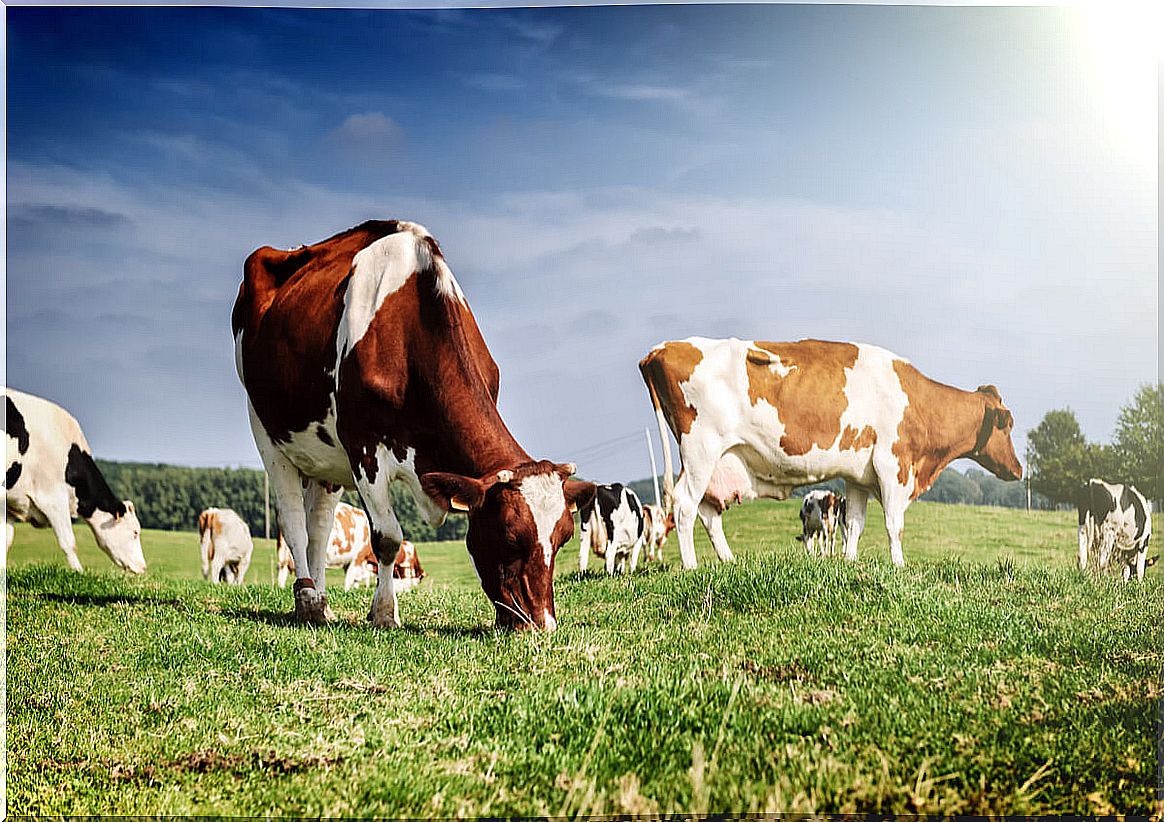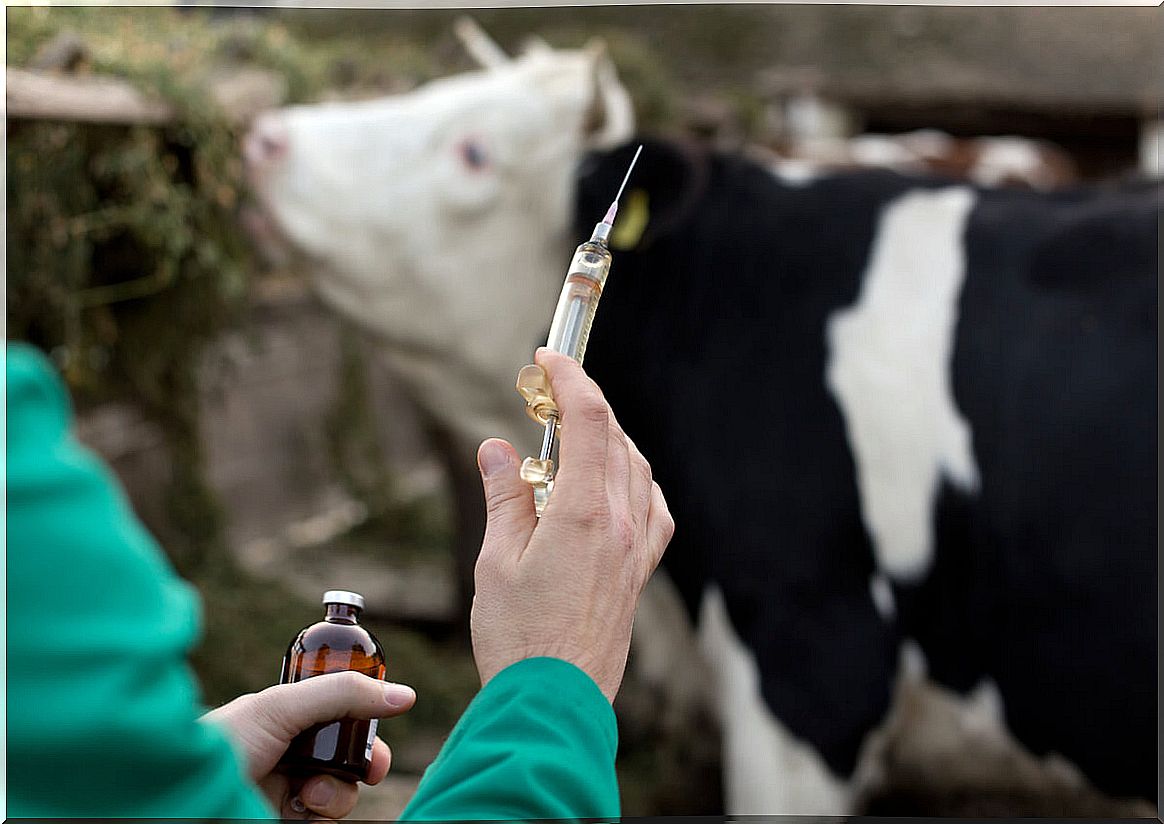What Do Farmers Refer To When They Talk About Bovine Sadness?

“Bovine sadness” is the colloquial way to refer to a group of diseases that regularly affect cattle. It is a syndrome caused by two very different microorganisms: a parasite and a bacterium. Both are transmitted by the bite of an insect, so they are vector diseases.
The symptoms cause in the animal a state of permanent apathy and indifference. Cows lose interest in their companions and the environment around them due to general malaise. Therein lies the difficulty of the disease: the key is to realize that this so-called sadness is a pathological state.
Bovine sadness, an ailment that cannot continue to go unnoticed
The term refers to two diseases, although they share several characteristics. Specifically, farmers who speak of this syndrome are describing bovine babesiosis and anaplasmosis, the causative agents of which are the following:
- Microscopic parasites of the genus Babesia .
- Gram-negative bacteria ( Anaplasma marginale ).

The growing importance of vector diseases
The incidence of vector-borne diseases continues to increase, in both animals and humans. This is the case of most seasonal pathologies, including those that concern us in these lines.
“Bovine sadness” is transmitted by bites of an arthropod known as the common bovine tick ( Rhipicephalus microplus ). Cases have also been described where other blood-sucking insects, such as horseflies or mosquitoes, participate in the transmission.
Who usually suffers from this “bovine sadness”?
The truth is that all types of cattle suffer from this disease, but the severity of the symptoms depends on factors such as the age of the animal. Young calves less than 12 months old tend to suffer from mild infections with low mortality.
On the other hand, animals older than 2 years can show variable mortalities between 20% and 50%. In this way, it will not be so much a serious disease among calves, but rather among adult cattle.
The symptoms that give name to such a particular disease
Cows suffering from Babesia or Anaplasma infections do not show overly specific symptoms. Rather, they are typical of any debilitating illness, such as fever, loss of appetite, depression, or weakness.
In lactating cows, there is a rapid drop in milk production, which warns the farmer that something is wrong. However, in beef cattle the disease is usually not detected until the affected animal is too weak.
The reason these symptoms appear is the destruction of red blood cells, as they are invaded by any of the aforementioned microorganisms. This causes a hemolytic anemia – due to the breakdown of these cells – which generates the constant deterioration of the animal’s state of health.
How is it diagnosed?
As there are no specific symptoms, a differential diagnosis with many other bovine pathologies is necessary. For example, with leptospirosis, botulism or anthrax. Still, there may be some suspicion when vectors are observed among the herd.
The only clinical evidence to confirm the diagnosis of “sadness” is direct observation of the microorganisms responsible for the disease. Through certain analyzes it is possible to see Babesia spp . or to Anaplasma spp . within the red blood cells of the sick animal.
The final step will be to carry out the corresponding serological tests to detect the antigens or the genetic material of the pathogenic microorganism. In fact, in this way it will be possible to differentiate without the possibility of error between one agent and another to proceed to treat it.
Is “bovine sadness” treated?
Like most infectious diseases, if caught early, symptoms can be controlled. To do this, you must first know for sure which is the organism that causes the symptoms in that animal:
- For the specific treatment of babesiosis, antiparasitic drugs are used, specific against these protozoa.
- Tetracyclines, which are antimicrobial drugs, are used for the treatment of anaplasmosis.
The problem with both pathologies is that, if the diagnosis does not arrive in time, the deterioration is usually irreversible. Therefore, without a doubt, the best recommendation is the use of vaccines.
Vaccination of cattle against babesiosis and anaplasmosis
Vaccines containing red blood cells from cows infected with a pathogen whose virulence has been reduced are often used . They are applied every year to cattle from 4 to 10 months of age that come from establishments where there are usually clinical cases.
It is also convenient to vaccinate those born in tick-free areas and who are going to be transferred to places where there may be ticks. However, they are contraindicated in adult animals in case virulence could be reversed. Thus, the vaccine is only used in very specific cases and under very well controlled conditions.

“Bovine sadness” is a real challenge for South American livestock
The countries of the tropical and subtropical area of Latin America speak of it as one of their greatest obstacles to raising livestock. The numerous losses in milk and meat production, the high costs of treatment or vaccine and the high mortality of bovine sadness do not give any respite to the farmers.









